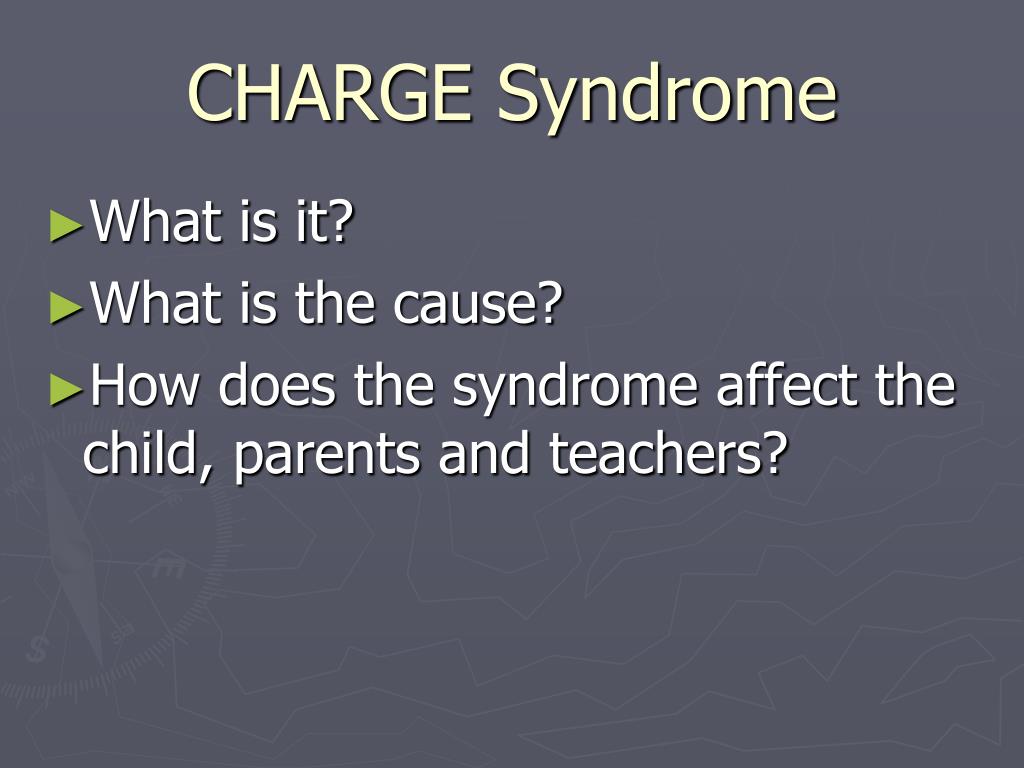


Verloes 8 designated semicircular canal defects as a major criterion, distinguishing them from the other ear anomalies.Ĭongenital anomalies of the olfactory structures in patients with CHARGE syndrome have been reported, 6, 10, 11 and a literature review indicates that olfactory dysmorphism and dysfunction are a crucial part of this malformative syndrome. 9 He also modified the status of characteristic ear anomalies, including them among the major criteria, and he added a host of less specific but frequent minor criteria. 7, 8 Blake et al 7 added cranial nerve anomalies to the list of major criteria, emphasizing the frequency of such anomalies as facial palsy (VII), sensory neural hearing loss (VIII), and swallowing difficulties (IX, X).
#Mild charge syndrome update
The definition of CHARGE syndrome continues to evolve as authors update the list of diagnostic criteria. In a later study of 12 patients, Pagon et al 6 united these 2 associations under the acronym CHARGE, describing the 6 diagnostic features including the following: ocular Coloboma, Heart defects, choanal Atresia, Retarded growth and/or development, Genital anomalies, and characteristic Ear anomalies. 3 It was initially described as a nonrandom association of multiple congenital anomalies by Hall 4 in 17 children with choanal atresia and was independently described by Hittner et al 5 in 10 patients with coloboma. RESULTS : MR imaging demonstrated olfactory anomalies in all 10 patients, including either absence or hypoplasia of the olfactory bulbs and olfactory sulci (p, 100% CI, 0.65–1.00).ĬONCLUSION: These findings suggest that olfactory abnormalities detectable on high-resolution MR imaging are among the most prevalent features of CHARGE syndrome.ĬHARGE syndrome is a genetic disorder with an estimated incidence from 1/8500 1 to 1/12,000 2 live births and has been shown to be correlated to an alteration of the CDH7 gene in 2/3 of the neonates. The prevalence (p) of congenital anomalies found in the medical records and of the olfactory structures was calculated with a 95% confidence interval (CI). MATERIALS AND METHODS: The medical records and high-resolution MR images (section thickness ≤3 mm and in-plane resolution ≤1 mm) in 10 patients with clinically proved CHARGE syndrome were retrospectively reviewed by 3 neuroradiologists who consensually evaluated the status of the olfactory bulbs and sulci as either normal, hypoplastic, or absent. The purpose of this research was to determine the radiographic prevalence of olfactory anomalies in a small sample of subjects with diagnosed CHARGE syndrome. Although a high prevalence of olfactory anomalies in CHARGE syndrome has been reported in autopsy and functional studies, to our knowledge, such anomalies have not been included among the diagnostic criteria, and their radiographic prevalence has not been assessed. BACKGROUND AND PURPOSE: CHARGE syndrome is a genetic disorder resulting in the association of multiple congenital anomalies.


 0 kommentar(er)
0 kommentar(er)
